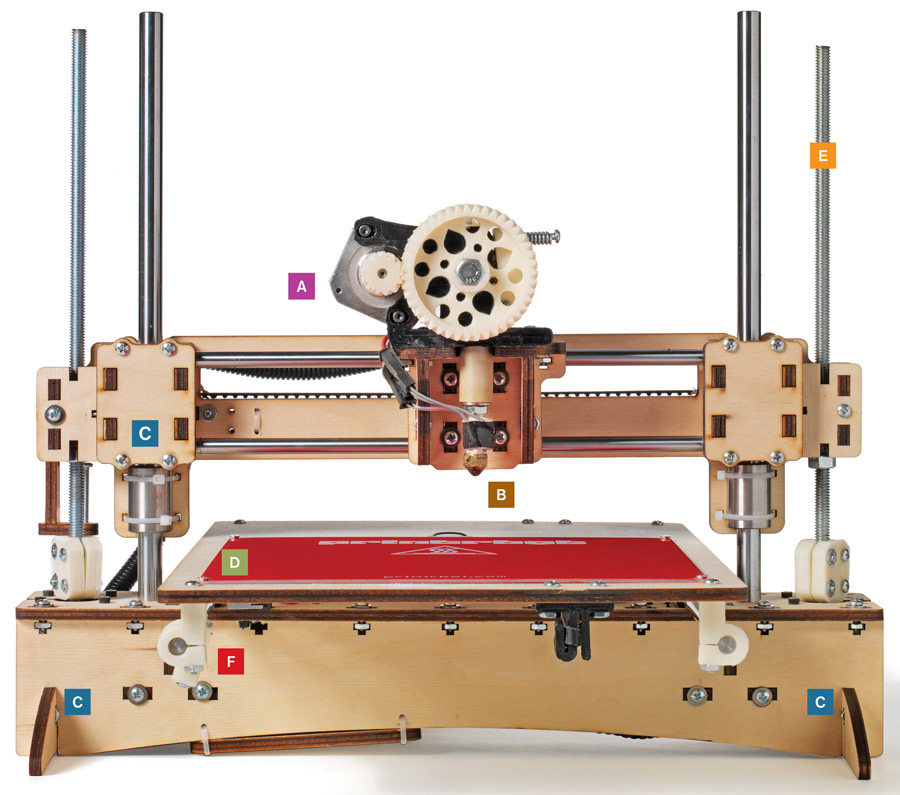
The PrintrBot is designed to introduce 3-D printing to a wider audience. At $550 or $700, depending on the model, the printer is affordable enough to use for home production of many kinds of objects, from cell-phone cases to art pieces. And it’s easier to assemble than previous 3-D printers. The inspiration came to creator Brook Drumm when he found it painfully slow to put together an earlier machine with many parts. Kickstarter users then pledged over $830,000 for Drumm to produce kits (see “TR10: Crowdfunding”).
Owners can use free software to design objects (or download designs) and then have them printed out in plastic. The plastic, the same type used to make Lego bricks, can be purchased online in the form of spools that feed into the printer. Printing can take minutes to a few hours, depending on the object’s size and level of detail.
A. Feed Mechanism
The PrintrBot makes things out of a threadlike plastic (not shown), which is fed through this mechanism into the print head. Like many of the device’s components, the assembly is made from gears that were themselves produced by a 3-D printer.
B. Print Head
A heated nozzle melts the plastic and deposits it onto the object being printed.
C. Motors
Enclosed motors move the printer head to any point in a cubic region of space, allowing objects to be built up in layers of plastic a fraction of a millimeter high.
D. Hot Bed
A heated plate prevents objects’ lower layers from cooling while their upper layers are printed. Such premature cooling can lead to warping.
E. Threaded Rods
The length of these rods determines the maximum size of the printed object. In the configuration shown, objects as large as 20 centimeters on a side can be produced. To print larger objects, users can purchase and substitute longer rods.
F. Control Electronics
A USB interface (at rear) allows the printer to be controlled by a range of free software.
Keep Reading
Most Popular
How scientists traced a mysterious covid case back to six toilets
When wastewater surveillance turns into a hunt for a single infected individual, the ethics get tricky.
The problem with plug-in hybrids? Their drivers.
Plug-in hybrids are often sold as a transition to EVs, but new data from Europe shows we’re still underestimating the emissions they produce.
What’s next for generative video
OpenAI's Sora has raised the bar for AI moviemaking. Here are four things to bear in mind as we wrap our heads around what's coming.
Stay connected
Get the latest updates from
MIT Technology Review
Discover special offers, top stories, upcoming events, and more.